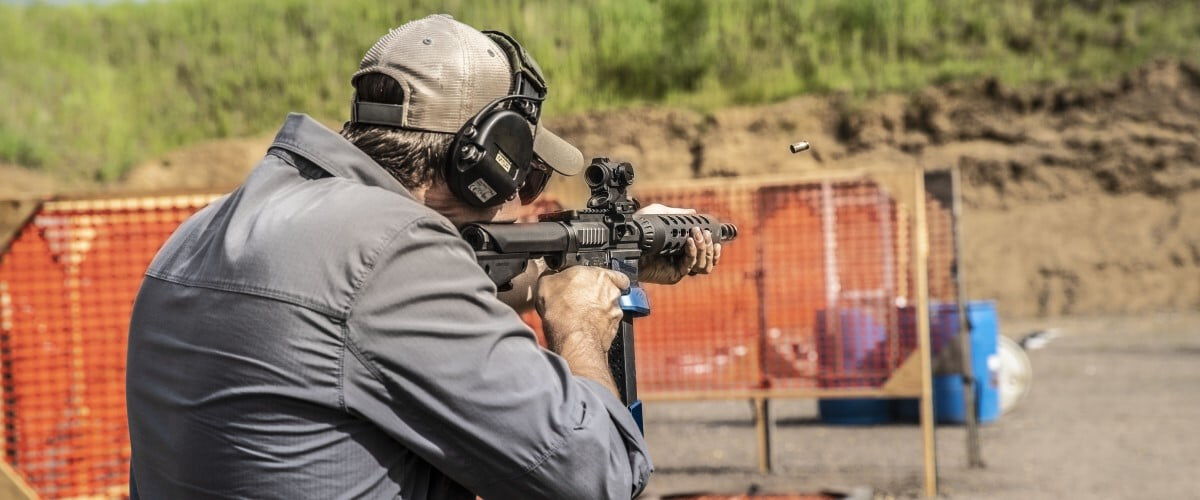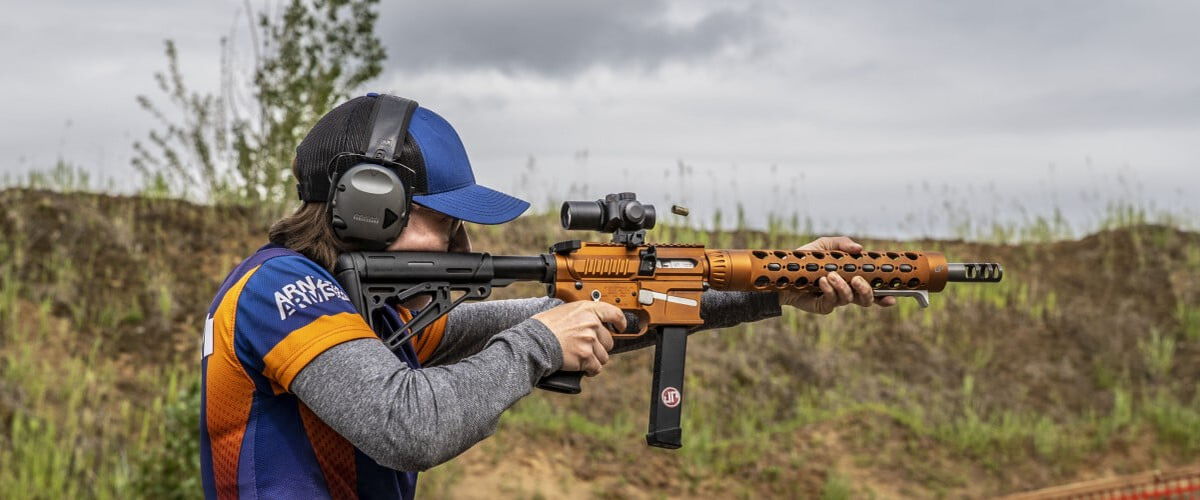
Concealed carry handguns and semi-automatic rifles are two of the most popular firearms in America, and both are good options for self-defense. Lately, though, many homeowners have turned toward pistol caliber carbines, or PCCs, as their primary defensive weapon. We explain the best ammo for these firearms.
The Case For PCCs
The primary attractions for PCCs are reduced recoil and noise, along with compatibility with your pistol ammunition. I’ve fired various PCCs in 9mm Luger, and all have substantially less muzzle blast than 5.56x45mm/223 Rem rifles. This makes them easier for many shooters to control, and buyers like the idea of using a single cartridge for all their self-defense needs.

Gold Dot Carbine
Defenders can now get Gold Dot's legendary accuracy and terminal performance in ammunition built specifically for carbine platforms. Gold Dot Carbine produces ideal velocities through carbine-length barrels and cycles flawlessly.
Buy NowPCCs oftentimes mimic the controls and design of AR rifles, and this offers many advantages. First, PCCs with AR-style controls are familiar to anyone who has used Stoner’s semi-automatic rifle. Rifles like the Springfield Saint Victor and Smith & Wesson’s Response look and feel like 5.56/223 AR rifles, and the safety, charging handle, magazine release, and other controls are laid out in the same fashion as other ARs. If you’re comfortable running an AR in 5.56, you can probably run one in 9mm Luger without a hiccup.
There are other substantial differences between AR-style PCCs and AR-15s. For starters, most AR-15s use an operating system that channels gasses back toward the action to cycle the gun. PCCs, by contrast, usually rely on blowback operation that utilizes the energy produced by the fired round to cycle the rifle. PCCs therefore lack a gas system and are simpler to maintain. AR PCCs are also generally lighter than AR-15 rifles, and the lack of a buffer tube in AR-style PCCs allows for folding stocks. Perhaps most importantly, AR-style PCCs can often use accessories designed for AR-15 rifles.
Not all PCCs are AR-style guns, though. Ruger’s successful PC Carbine and Smith & Wesson’s FPC do not mimic an AR, but both models have easy-to-use controls and do have features like M-LOK that allow you to add accessories like lights. These two guns also offer a feature that draws many shooters to PCCs: magazines that are interchangeable with the brand’s 9mm pistols. The FPC is compatible with Smith & Wesson’s M&P full-size and compact pistol magazines, and the Ruger PC carbine uses common Ruger and Glock magazines. The obvious advantage, of course, is that you can have one magazine type that functions both in your carbine and your pistol.
Keep In Mind
PCC rifles aren’t as powerful as 5.56 AR-15s, and PCCs have a shorter effective range. However, these disadvantages must be weighed in the context in which these carbines will be used. If your AR-15 serves double duty as a home defense and coyote hunting rifle then the 5.56/223 platform’s added velocity and improved long-range performance makes sense. Strictly for home defense applications, though, the PCCs sagging trajectory at long range is not an issue. Most defensive shooting situations happen at relatively close range, certainly under 50 yards, and most PCCs are accurate at that distance.
The other primary disadvantage for PCCs is that most pistol ammunition is optimized for 4 or 5-inch barrels, not the 16 or 18-inch barrels common on PCCs. However, Speer’s Gold Dot Carbine is specifically engineered to operate in carbine-length barrels. Utilizing the proven 135-grain Gold Dot G2 bullet, which has proven very effective for self-defense applications in pistols, Speer’s PCC load is designed to operate at carbine velocities. It’s also designed to feed smoothly in carbines, which is an important concern. Some ammunition (particularly ammo designed for and tested using pistols) doesn’t operate effectively in PCCs. Gold Dot Carbine, by contrast, was designed to work in carbines, but it will also effectively run in 9mm pistols.
Not Just Home Defense
The most logical application for PCCs is home defense, and they perform very well at that task, offering better accuracy and more velocity than pistols of the same caliber without the added muzzle blast or fears of overpenetration with 5.56/223 AR-15s. But these guns aren’t strictly designed for defense. I enjoy shooting PCCs and often take one to the range when I’m shooting my pistol. The low recoil and low report of a 9mm PCC is suitable for new shooters, and the PCC makes a great transition for anyone shooting a carbine for the first time.

PCCs also make excellent backpacking firearms. Many PCCs have folding stocks, and this allows overall length to be shortened to around 20 inches. A folded PCC fits neatly in a backpack and makes a great camp gun, perfect for defense, target shooting or potting game for food. Because of their compact size, PCCs are also great truck guns because they are easy to store and don’t take up much space.
The Rise Of The PCC
PCCs are growing more popular every year, and that’s a good thing. For starters, they’re loads of fun to shoot and many shooters find they can shoot a 9mm PCC far more accurately than a pistol. Having the ability to swap ammo and, in some cases, magazines only adds to the PCCs appeal. If you carry a pistol and are thinking about a carbine, then consider the current lineup of PCCs. They’re likely just what you’re looking for.